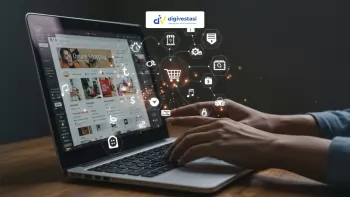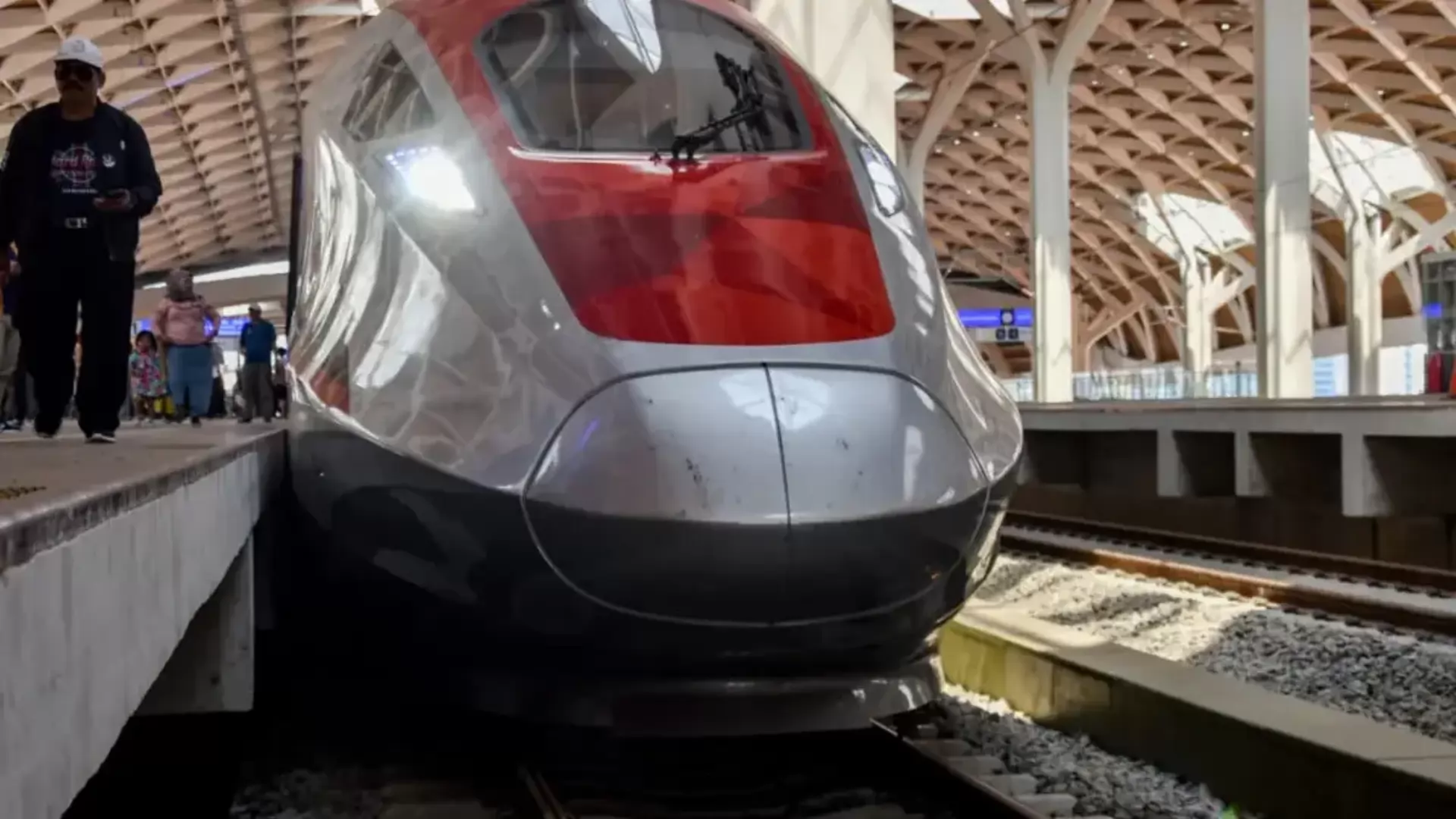
Bussiness | Economy
Bank Indonesia Chief Reveals: Indonesia's E-Commerce Digital Transactions Hit Rp4,500 Trillion!
/index.php
Berita Terkini - Posted on 30 October 2025 Reading time 5 minutes

The Jakarta–Bandung High-Speed Rail (KCJB) project, known as Whoosh, has once again drawn public attention, particularly regarding its financial burden.
Since its full operation began in October 2023, the project—initiated during the administration of Indonesia’s 7th President, Joko Widodo—has continued to face funding challenges, especially related to debt.
Whoosh was built with a total investment of US$7.2 billion, equivalent to around Rp116.54 trillion (based on an exchange rate of Rp16,186 per US dollar).
This figure includes a cost overrun of US$1.21 billion from the initial estimate of US$6.05 billion—still lower than Japan’s competing proposal of US$6.2 billion.
Of the US$7.2 billion total, 75% was financed through loans from the China Development Bank (CDB), while 25% came from shareholder equity.
The shareholders consist of a consortium of Indonesian state-owned enterprises (SOEs) through PT Pilar Sinergi BUMN Indonesia (PSBI), which holds 60%, and Beijing Yawan HSR Co. Ltd., which holds 40%.
SOEs under PSBI include PT Kereta Api Indonesia (Persero) or KAI (58.53%), PT Wijaya Karya (Persero) Tbk (33.36%), PT Jasa Marga (Persero) Tbk (7.08%), and PT Perkebunan Nusantara I (1.03%).
The CDB loan carries an interest rate of 3.3% and a tenor of up to 45 years.
As a result, the Whoosh project has placed a financial strain on KAI, which reported a loss of around Rp1 trillion in the first half of 2025.
This loss stems from KAI’s majority ownership in PSBI (58.53%), contributing a net loss of Rp951.48 billion to KAI as of June 2025.
However, Finance Minister Purbaya Yudhi Sadewa clarified that the state budget (APBN) would help cover the project’s debt, emphasizing that Danantara, the entity overseeing the project, bears financial responsibility—not the national fiscal budget.
Moreover, SOE dividends that once flowed into the state budget are now channeled to Danantara.
“Since this is under Danantara’s management, they already have their own governance and dividend stream, averaging about Rp80 trillion annually,” Purbaya said.
So, why is Whoosh losing money, and what can be done?
According to Senior Analyst Ronny P. Sasmita from the Indonesia Strategic and Economic Action Institution, early losses are normal for a high-speed rail project.
Nearly every country with similar infrastructure has faced the same situation due to massive upfront investments in infrastructure, equipment, technology, and land acquisition.
For instance, both Japan and China took years before their high-speed rail systems reached break-even.
Thus, early losses should not be viewed as failure, but rather as a natural phase in the long-term development of strategic transportation projects.
However, Ronny argued that Whoosh’s main problem lies in its large debt, which cannot be offset by its current business performance.
This issue stems from the high project valuation agreed upon during initial planning.
In addition, the load factor or occupancy rate remains below optimal levels, as the route only recently became fully operational.
Integration with other transportation modes in surrounding areas is still limited, while public mobility patterns continue to adapt to the new service.
Ronny noted that public transport projects like this generally require 5–10 years to reach break-even, depending on fare strategies, trip frequency, and multimodal integration.
“If connectivity improvements—such as links to Bandung, Tegalluar, and new transit areas—are implemented, and tourism and business promotion along the route are enhanced, passenger growth potential will be significant. In the medium term, within three to five years, performance can improve if business strategy and governance are strengthened,” he said.
To improve performance, Ronny suggested three main measures.
First, enhance transport integration and spatial planning to ensure easy and efficient access to Whoosh stations.
Second, introduce policy incentives, such as tax relief or temporary subsidies, to maintain competitive ticket pricing.
Third, develop a long-term business strategy, including the creation of Transit Oriented Developments (TODs) around stations, allowing revenue to come not only from ticket sales but also from property, advertising, and private partnerships.
Ronny warned that if Whoosh’s losses and debt burden persist without corrective measures, they could strain KAI’s finances and affect other transport projects.
Hence, the government and SOEs must initiate financial restructuring, such as extending loan maturities, converting part of the debt into government equity, or attracting new strategic partners.
“The goal is to reduce interest burdens and maintain healthy cash flow—not just to patch short-term losses, but to ensure a sustainable business model that adds value to the surrounding economy,” he explained.
Meanwhile, Andalas University economist Syafruddin Karimi argued that Whoosh’s performance remains below expectations because fixed costs and financing expenses are still too high relative to ticket revenue.
He noted that passenger numbers rose to 9.3 million by mid-May 2025, with daily records reaching 25,000, yet this was insufficient to offset the Rp1 trillion consolidated loss in the first half of 2025.
“A mix of long loan maturities, higher interest rates on additional borrowing, and incomplete feeder integration has slowed load factor growth and non-fare revenue. Additionally, ongoing restructuring with Chinese lenders has not yet reduced effective interest costs,” he explained.
Syafruddin said Whoosh could perform better once two key conditions are met: a financial restructuring to lower interest burdens, and a commercial strategy to increase revenue per seat.
He advised using the first 12–24 months post-restructuring as an acceleration phase through dynamic pricing, integrated tourism packages, and station monetization.
Then, in the following 24–36 months, focus on non-fare revenue streams such as retail, advertising, MICE, and TOD development.
“With this sequencing, operational cash flow can approach break-even while creditor obligations remain manageable,” he concluded.
Source: cnnindonesia.com
What do you think about this topic? Tell us what you think. Don't forget to follow Digivestasi's Instagram, TikTok, Youtube accounts to keep you updated with the latest information about economics, finance, digital technology and digital asset investment.
DISCLAIMER
All information contained on our website is summarized from reliable sources and published in good faith and for the purpose of providing general information only. Any action taken by readers on information from this site is their own responsibility.